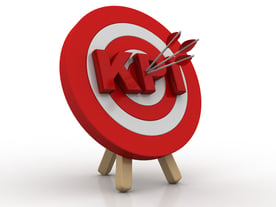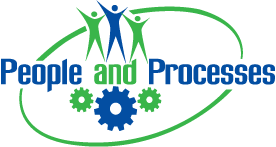
From a maintenance perspective, are you scheduling Operations and other support functions?
In many organizations, I find that people are not utilizing the CMMS/EAM to the fullest extent with respect to “crafts” when it comes to coordinating work. You will probably tell me, “Jeff, no surprise there”. It doesn't have to be this way.
Let me explain what I mean. When I look at schedules for maintenance work, rarely do I see crafts listed other than those from the maintenance organization. Let’s take a job like welding on a product tank in a food plant as an example. We need Operations personnel to empty and clean the tank in advance of the welding work. Once the welding work is complete, we may need Operations to clean and sanitize the vessel. Following on, Quality Services or lab personnel may be required to swap the tank for microbial contamination and release it for refill with product. These are all coordination activities that we want to cover with child work orders as an example. In addition, should we not coordinate these activities from a scheduling perspective?
The bottom line is that just like we have crafts such as pipefitter, mechanic, or electrician, we should also have operator, lab tech, or other support functions identified in the CMMS. The work of those individuals and the required coordination of those activities should appear on the weekly schedule with the work order numbers/ work descriptions. When we are in next week’s scheduling meeting, we can set the expectation with Operations and our other partners that we will be needing assistance with equipment availability, possibly help with the maintenance tasks themselves, and the restart of that equipment. Approaching our maintenance tasks and their coordination from a more holistic inclusive viewpoint helps us build better partnerships with the other stakeholders.
Check your schedule and your approach. Are you doing this?
Speak soon,
Jeff


 Sadly for some organizations, their maintenance and operations practices are not much different than the small bands of gold miners going for broke in the Alaskan wilderness as reflected on the television shows. Operating on s shoestring budget, they try to bootstrap their way along, experiencing increased losses from a run to failure mentality. While run to failure can be a strategy for some equipment, it shouldn’t be for all of your assets, especially the critical ones. Proactive organizations learned a long time ago that you can’t typically sustain your business with that approach.
Sadly for some organizations, their maintenance and operations practices are not much different than the small bands of gold miners going for broke in the Alaskan wilderness as reflected on the television shows. Operating on s shoestring budget, they try to bootstrap their way along, experiencing increased losses from a run to failure mentality. While run to failure can be a strategy for some equipment, it shouldn’t be for all of your assets, especially the critical ones. Proactive organizations learned a long time ago that you can’t typically sustain your business with that approach. From a maintenance perspective, are you scheduling Operations and other support functions?
From a maintenance perspective, are you scheduling Operations and other support functions? At what frequency do you calculate the schedule compliance metric? Is it weekly, daily, or hourly? Depending on who you ask, you might come up with a different answer. For me, it depends on several factors. The first one is the level of Maintenance organization reactivity. That is followed by how long the organization has been producing next week’s schedule. It might surprise you but a number of organizations still don’t produce a formal schedule for next week. Another factor is the partnership between Maintenance and Operations.
At what frequency do you calculate the schedule compliance metric? Is it weekly, daily, or hourly? Depending on who you ask, you might come up with a different answer. For me, it depends on several factors. The first one is the level of Maintenance organization reactivity. That is followed by how long the organization has been producing next week’s schedule. It might surprise you but a number of organizations still don’t produce a formal schedule for next week. Another factor is the partnership between Maintenance and Operations.  I was recently conducting a Maintenance Planning and Scheduling course onsite. As with all of the classes that I facilitate, I make an effort to learn about those in attendance on a more personal level. This class was no different and shortly, I learned about the work history of several people. One had been there for 44 years, another for 37, and a third for 31 years. The guy who had been there for 44 years was 70 years old and because of his in-depth knowledge, they were asking him to stay around a few more years. It’s not out of financial need that he stays but a sense of duty and loyalty.
I was recently conducting a Maintenance Planning and Scheduling course onsite. As with all of the classes that I facilitate, I make an effort to learn about those in attendance on a more personal level. This class was no different and shortly, I learned about the work history of several people. One had been there for 44 years, another for 37, and a third for 31 years. The guy who had been there for 44 years was 70 years old and because of his in-depth knowledge, they were asking him to stay around a few more years. It’s not out of financial need that he stays but a sense of duty and loyalty. If you are like many Maintenance Planners that I have the opportunity to interface with, most aren't doing much using the job plan concept. The intent of the job plan is to better enable the craftspeople to execute their job with the materials, tools, and information in hand. Ideally, you really want a template to facilitate the development of these job plans. Recently, I did a webinar for Emaint which is a CMMS vendor on creating job plans. You can view it
If you are like many Maintenance Planners that I have the opportunity to interface with, most aren't doing much using the job plan concept. The intent of the job plan is to better enable the craftspeople to execute their job with the materials, tools, and information in hand. Ideally, you really want a template to facilitate the development of these job plans. Recently, I did a webinar for Emaint which is a CMMS vendor on creating job plans. You can view it  Why should we bother with this job plan thing anyway, after all the Technicians know what to do, right? If you were undergoing surgery, in addition to the proper training; you would expect a surgical team to have a set of procedures and checklists to perform their work on you. What if they started operating out of sequence before you were fully sedated? What if they left some of their tools or sponges behind when they closed you up? I hear you saying “But Jeff, we aren’t dealing with life or death when we work on equipment!” When you consider the environmental and safety consequences of the equipment that we work on, that may not be the case. I would guess that many of the people involved with some of the life ending and environmental disasters in recent memory never expected things to end the way they did either.
Why should we bother with this job plan thing anyway, after all the Technicians know what to do, right? If you were undergoing surgery, in addition to the proper training; you would expect a surgical team to have a set of procedures and checklists to perform their work on you. What if they started operating out of sequence before you were fully sedated? What if they left some of their tools or sponges behind when they closed you up? I hear you saying “But Jeff, we aren’t dealing with life or death when we work on equipment!” When you consider the environmental and safety consequences of the equipment that we work on, that may not be the case. I would guess that many of the people involved with some of the life ending and environmental disasters in recent memory never expected things to end the way they did either.